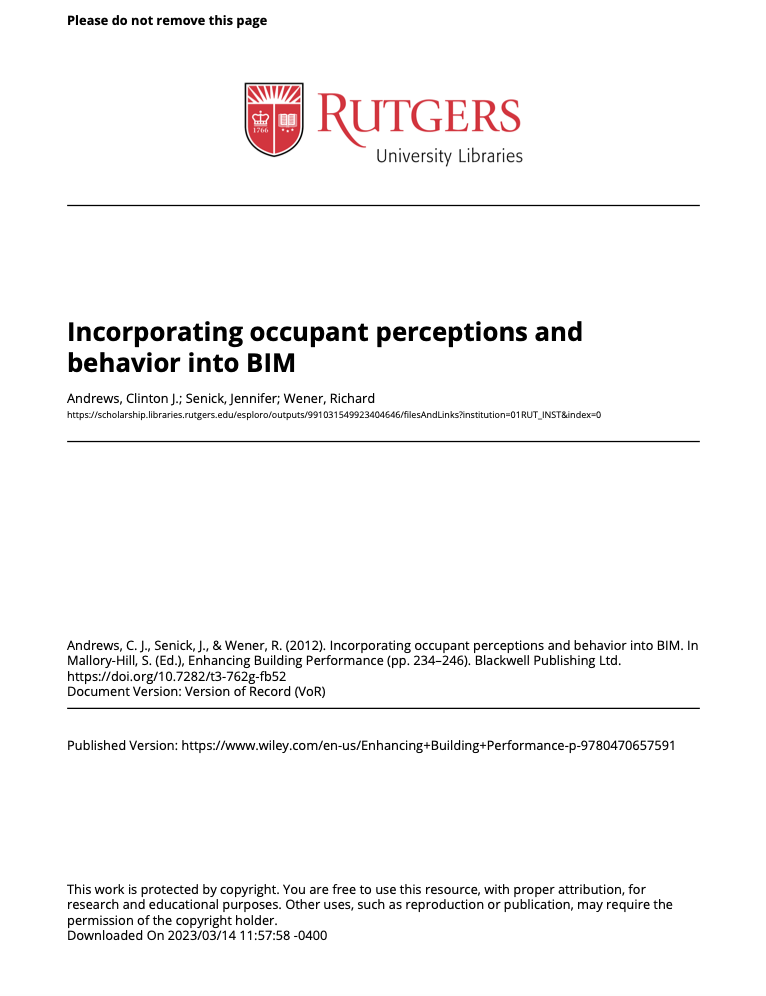Building information management (BIM) systems that incorporate simulation modeling can pre-test how alternative building designs will perform. A current weakness of most such simulation models, however, is that they ignore the wide variability in occupant preferences and behaviors. It is typical to design for the average occupant, or to meet minimal code requirements, and to assume that occupants are passive objects that merely emit heat, consumeenergy and water, and require certain indoor environmental conditions.
This chapter introduces a simulation-modeling framework that highlights the occupant’s influence on building performance and seeks to provide a basis for prospectively assessing the user’s experience. The model has been calibrated and validated using post-occupancy survey data from an office/classroom buildinglocated in the North Eastern United States. An application to lighting design in a similar, nearby building with green features shows that the model successfully predicts some, but not all, relevant aspects of building performance. This comparison of modeling and empirical results provides an opportunity to reflect on the potential as well as the limits of modeling, and on the value of dialogue between the BIM and building performance evaluation (BPE) communities.
Post-occupancy evaluation (POE) often characterizes occupant perceptions and behaviors, and uses these data to assess how well the facility meets the criteria and goals identified in the planning, programming, and design phases. As such, it is an important element of BPE that integrates evaluation throughout the life cycle of the building (see Chapter 2). Often missing from BPE is attention to the flip side of the environment-behavior equation- the impact of user behavior on the building performance. How does the dailyactivity of building users (occupants and building managers) affect the ~uilding’.s perf~rmance with respect to energy efficiency, water usage, and md~or air quahty? This may be especially relevant for green buildings, which exphcitly pursue superior performance on these measures.
